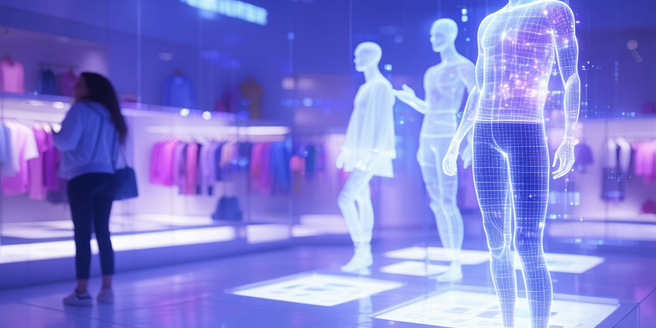Holography And Immersive Experiences

Understanding the Basics of Holography
Holography, a fascinating field of optics, involves creating three-dimensional images by recording light patterns from a laser. Unlike traditional photography, which captures two-dimensional representations, holograms provide a depth and realism that nearly replicates the original scene. At the core of holography is the phenomenon of interference, where light waves overlap to produce a variety of intensity patterns. A laser beam is split into two: a reference beam, which illuminates the recording medium directly, and an object beam, which reflects off the object being captured. The interaction of these beams on the recording medium creates a hologram. When illuminated by the original reference beam or a similar light source, this medium reproduces the object in three dimensions. Understanding this basic process is crucial for exploring holography’s potential.
The Role of Holography in Augmented Reality
Holography stands at the forefront of technological advancements in augmented reality (AR), offering significant enhancements by providing truly immersive experiences. Unlike conventional AR systems that overlay 2D images onto a real-world view, holograms introduce full 3D integration. This allows users to perceive digital elements as part of their natural environment, making interactions more intuitive and realistic. Holography enables accurate depth perception, letting users visualize information in a spatial context tailored to their surroundings. For instance, in architecture, holographic AR can project a model directly onto a physical landscape, providing architects and clients with an authentic preview. As holographic technology matures, its role in AR will deepen, facilitating seamless blends of digital and physical realities that revolutionize how we interact with information.
Innovative Applications of Holographic Technology
Holographic technology has evolved beyond artistic displays, finding applications across diverse fields. In medicine, holography aids in surgical planning by rendering detailed 3D organ models that enhance spatial understanding for surgeons. Education benefits from holographic content, offering students interactive, life-like experiences, especially in complex subjects like anatomy and engineering. In retail, holography transforms consumer experiences, delivering 3D product displays that enable virtual try-ons. The automotive industry leverages holography for advanced safety, projecting critical information such as speed and navigation directly onto windshields. Even in security, holography plays a vital role, with holographic authentication marks preventing counterfeit. As technology advances, innovative applications will continually emerge, driven by holography’s unique ability to create lifelike, three-dimensional representations.
Transforming Entertainment with Immersive Experiences
The entertainment industry is being revolutionized by holography, offering audiences entirely new ways to experience content. Concerts can feature holographic performances, allowing artists to transcend geographical boundaries and perform live in multiple locations simultaneously. Movies and video games benefit from holographic projections that can turn traditional flat screens into immersive environments, where characters and scenes appear in the viewer’s space. Museums and theme parks use holography to create interactive exhibits that engage visitors on a multi-sensory level. This transformative capability is not just limited to passive experiences; it extends to interactive storytelling, where audiences can influence the narrative flow. By merging digital and physical realities, holography is reshaping entertainment into an immersive, participatory art form that captivates audiences worldwide.
Future Prospects of Holography in Daily Life
As holographic technology continues to advance, its integration into daily life looks increasingly promising. Future applications could revolutionize personal communication, with life-like holographic video calls offering an unprecedented sense of presence. In education, students might attend interactive holographic lectures, bridging geographical gaps and enhancing learning experiences. Home environments could become adaptable, with holographic interiors that change at a command, offering personalized aesthetics or functional displays. Shopping could also transform, with consumers interacting with holographic aisles to explore products without physical constraints. Even urban planning could be impacted, using holographic models to simulate architectural designs in existing spaces. This evolution heralds a future where holography seamlessly blends with everyday activities, creating dynamic interactions and enhancing experiences across various aspects of life.